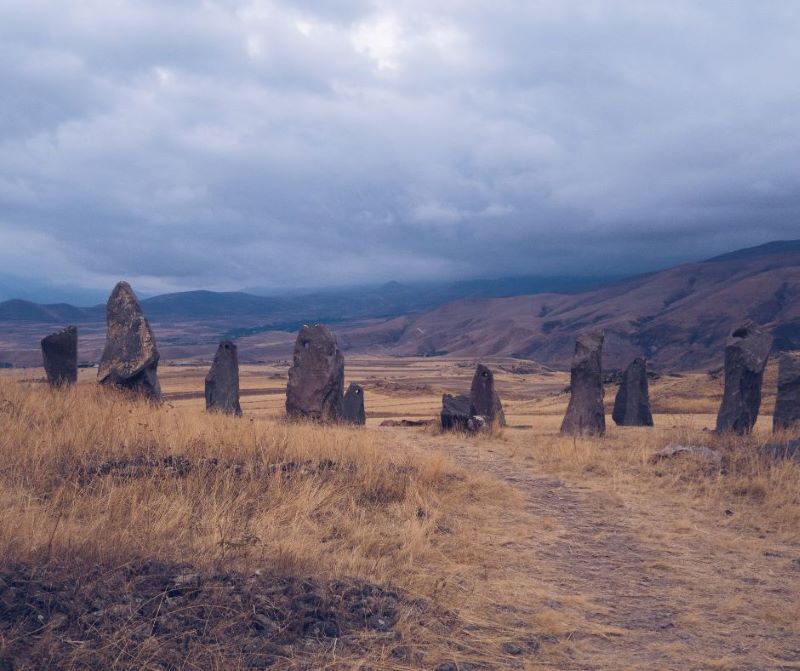
Not all countries can boast of having some mystical sites that have evoked the interest of researchers for years. There is a site in Armenia called Carahunge that captivates visitors and scientists thanks to its historical significance and mysterious allure.
A place with more than 200 standing stones leaves archeologists puzzled over its origin and purpose. For this reason, it’s often referred to by tourists as Armenian Stonehenge.
This 4.5-hectare site located in Armenia’s Syunik Province probably appeared around 7,500 dates ago. Although there is no clear data on when and how these basalt monuments were erected.
In our blog, we will try to examine its significance and will present the theories surrounding its creation.
Possible Origins
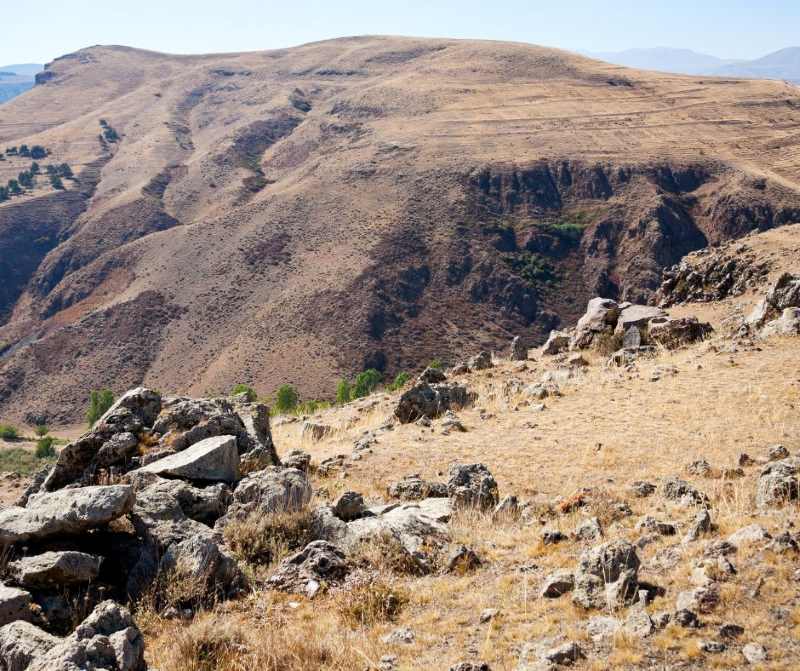
Before speaking about the history let’s dig into the name of a site. The word Carahunge stems from the word “car” which means a stone in Armenia and “hunge” meaning “sound”. In other words, Carahunge can be referred to as “speaking or singing stones”. The stones have holes and on windy days this sound resembles whistling or singing.
By the way, it is not yet clear what is the purpose of the holes in the rock. Locally, the name of the rocks is Zorats Qarer which means “worrier stones”.
Dating back to the prehistoric era, Carahunge is estimated to be over 7,500 years old. Its age places it among the earliest megalithic sites. However, the thing is no one exactly knows if this is the real age. This figure was suggested by Armenian physicist Paris Herouni who used four telescopic methods to find that the monuments date to around 5,500 BC.
The layout of Carahunge is reminiscent of other ancient stone circles, most notably Stonehenge in England. The stones are arranged in a circular formation, with some standing upright while others lie toppled on the ground.
There is a central circle, north and south arms, a northeast alley, a chord, and scattered standing stones. With 223 identified stones, their height varies from 0.5 to 3 meters, some weighing up to 10 tons. Approximately 80 stones feature circular holes, with 37 still standing. While the inner holes remain well-preserved, there are still different speculations about their purpose.
Theories and Speculations Around Carahunge
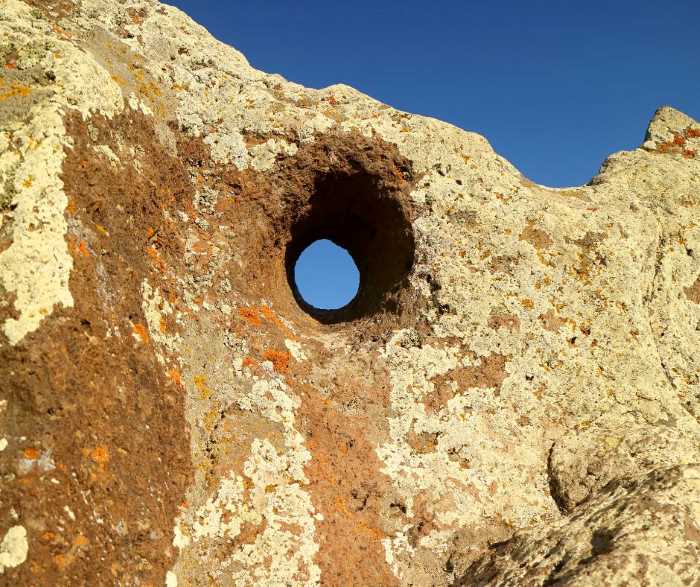
This monument has been the subject of intense speculation and scholarly debate regarding its true purpose and significance.
Carahunge was first mentioned by the Georgian ethnographer Stepan Lisitsian in 1935. He suggested that in ancient times this place was used as a pen for keeping animals. But in the 1950s, Armenian historian and philologist Marus Hasratyan discovered burial chambers in Zorats Karer dating back to the 11th-9th centuries BC.
For example, in the 90s radio physicist Paris Herouni and his research team came forward with the claim that Carahunge is the world’s oldest astronomical observatory. Herouni’s assertion gained support from esteemed archeologist and astronomer Gerald Hawkins, renowned for his analysis of Stonehenge.
However, subsequent investigations by archaeologists from the University of Munich identified Carahunge as primarily a necropolis dating from the Middle Bronze Age to the Iron Age. Team leader Stephan Kroll concluded that the stone formations likely served as part of a city wall, possibly from the Hellenistic period, rather than an observatory.
Herouni’s assertion that Carahunge predates Stonehenge by over four thousand years has sparked widespread interest. However, it also drew skepticism from many scholars.
By the way, National Geographic also included Carahunge in its list of top ancient sites for stargazing.
Moreover, even holes in the stones were the subject of debate. Some scientists believed their purpose was to watch stars and they served as a kind of telescope. Others believe they were simply used to tie up animals.
Thus, there is a mystery over the stones and many questions remain unanswered. Probably this is the reason the monument attracts tourists willing to see this unusual site.
Recent Discoveries
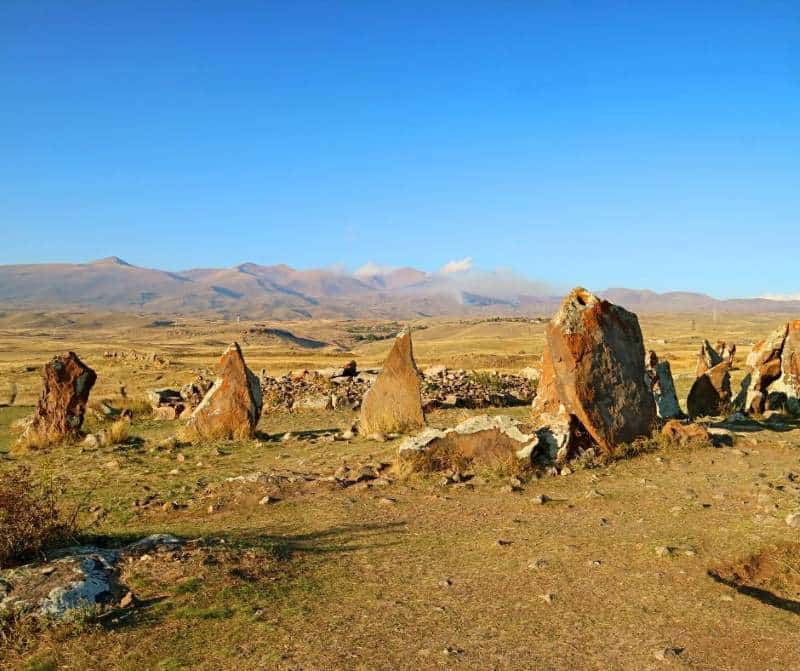
The latest surveying works have unveiled exciting new discoveries about this ancient monument. The researchers from the Byurakan Observatory and Armenia’s University of Architecture used modern equipment like aerial photography and scanning.
The survey revealed approximately 30 previously undocumented stones with holes, supplementing the known 84 stones of the monument. Moreover, the exhibition identified previously overlooked stones of significant astronomical importance.
These findings provide researchers with a wealth of new data for astronomical calculations and metrological analysis.
How to Visit Carahunge?
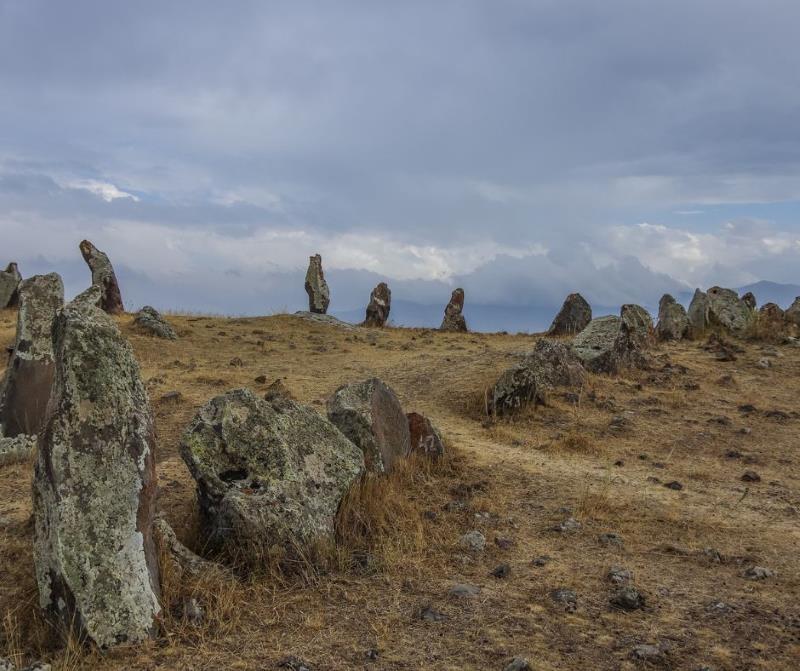
The monuments welcome visitors and the best time to visit is from May to October as it’s not too cold. Autumn or the second half of spring is an ideal time to avoid the summer heat. The site is working from 10 am to 6 pm and is located around a 4-hour drive from Yerevan. If you want to spend more time inspecting the site, you can stay overnight in Goris. There are also other attractions nearby like the swinging Khndzoresk bridge or a cave town, so you can have an exciting trip. Levon Travel agency is focused on various trips inside Armenia and can organize any tour based on your budget and preferences.
